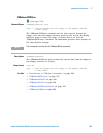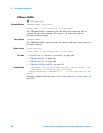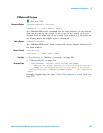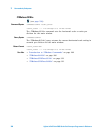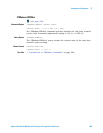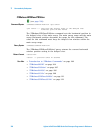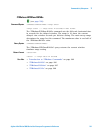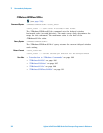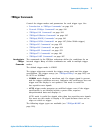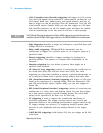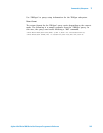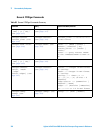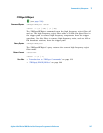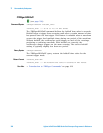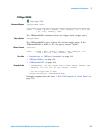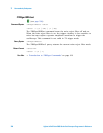Commands by Subsystem 3
Agilent InfiniiVision 5000 Series Oscilloscopes Programmer's Reference 313
:TRIGger Commands
Control the trigger modes and parameters for each trigger type. See:
• "Introduction to :TRIGger Commands" on page 313
• "General :TRIGger Commands" on page 316
• ":TRIGger:CAN Commands" on page 324
• ":TRIGger:DURation Commands" on page 335
• ":TRIGger[:EDGE] Commands" on page 341
• ":TRIGger:GLITch Commands" on page 347 (Pulse Width trigger)
• ":TRIGger:IIC Commands" on page 355
• ":TRIGger:LIN Commands" on page 364
• ":TRIGger:SPI Commands" on page 372
• ":TRIGger:TV Commands" on page 381
• ":TRIGger:UART Commands" on page 387
Introduction to
:TRIGger
Commands
The commands in the TRIGger subsystem define the conditions for an
internal trigger. Many of these commands are valid in multiple trigger
modes.
The default trigger mode is :EDGE.
The trigger subsystem controls the trigger sweep mode and the trigger
specification. The trigger sweep (see ":TRIGger:SWEep" on page 323) can
be AUTO or NORMal.
• NORMal mode displays a waveform only if a trigger signal is present
and the trigger conditions are met. Otherwise the oscilloscope does not
trigger and the display is not updated. This mode is useful for
low- repetitive- rate signals.
• AUTO trigger mode generates an artificial trigger event if the trigger
specification is not satisfied within a preset time, acquires
unsynchronized data and displays it.
AUTO mode is useful for signals other than low-repetitive- rate signals.
You must use this mode to display a DC signal because there are no
edges on which to trigger.
The following trigger types are available (see ":TRIGger:MODE" on
page 319).



